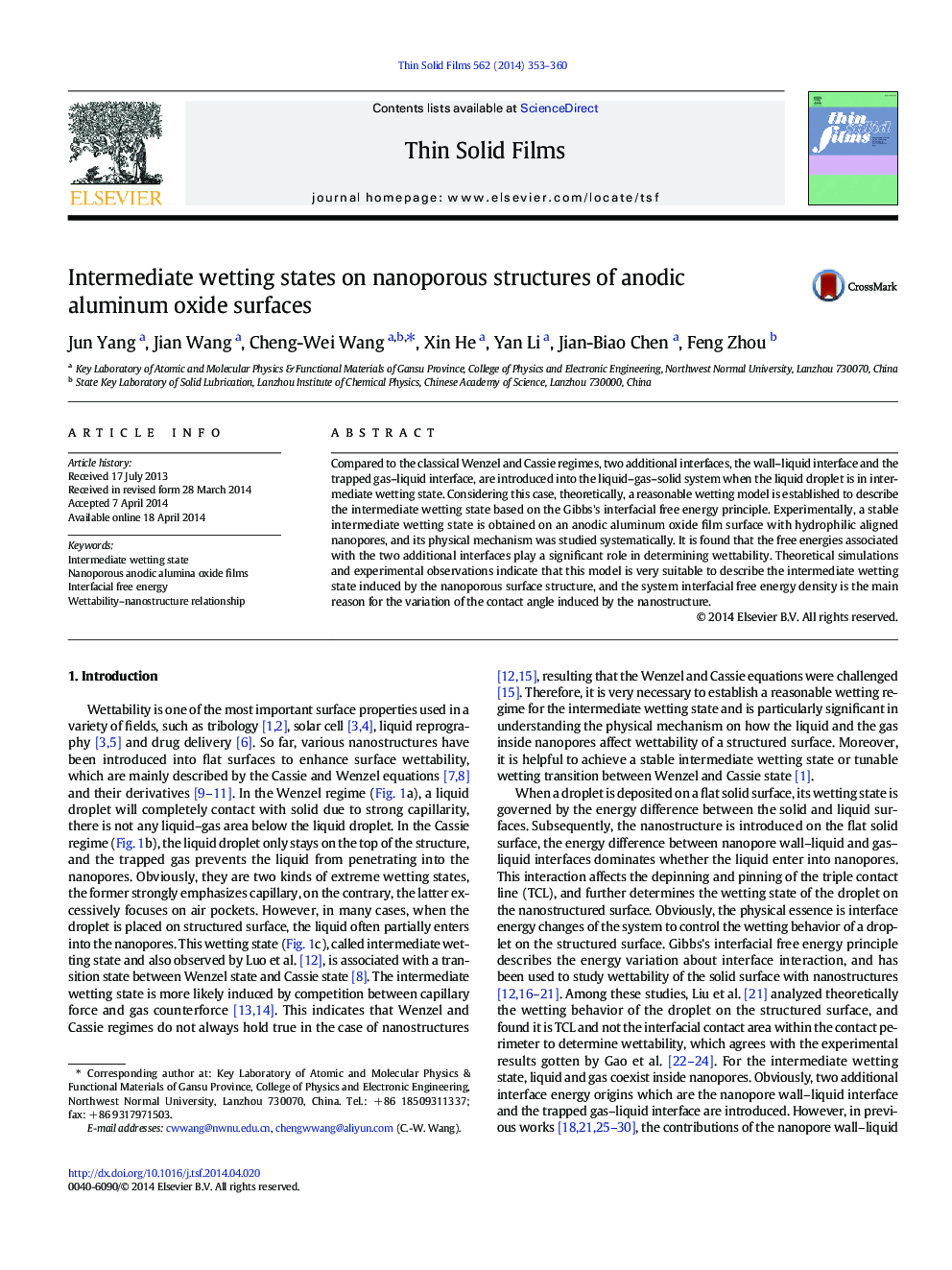| Article ID | Journal | Published Year | Pages | File Type |
|---|---|---|---|---|
| 1665201 | Thin Solid Films | 2014 | 8 Pages |
•A model was developed to describe intermediate wetting state.•Contact angles acquired on AAO films were consistent with theoretical simulations.•Two kinds of interfacial free energies play a significant role in wettability.•The variation of contact angle depends on system interfacial free energy density.
Compared to the classical Wenzel and Cassie regimes, two additional interfaces, the wall–liquid interface and the trapped gas–liquid interface, are introduced into the liquid–gas–solid system when the liquid droplet is in intermediate wetting state. Considering this case, theoretically, a reasonable wetting model is established to describe the intermediate wetting state based on the Gibbs's interfacial free energy principle. Experimentally, a stable intermediate wetting state is obtained on an anodic aluminum oxide film surface with hydrophilic aligned nanopores, and its physical mechanism was studied systematically. It is found that the free energies associated with the two additional interfaces play a significant role in determining wettability. Theoretical simulations and experimental observations indicate that this model is very suitable to describe the intermediate wetting state induced by the nanoporous surface structure, and the system interfacial free energy density is the main reason for the variation of the contact angle induced by the nanostructure.
